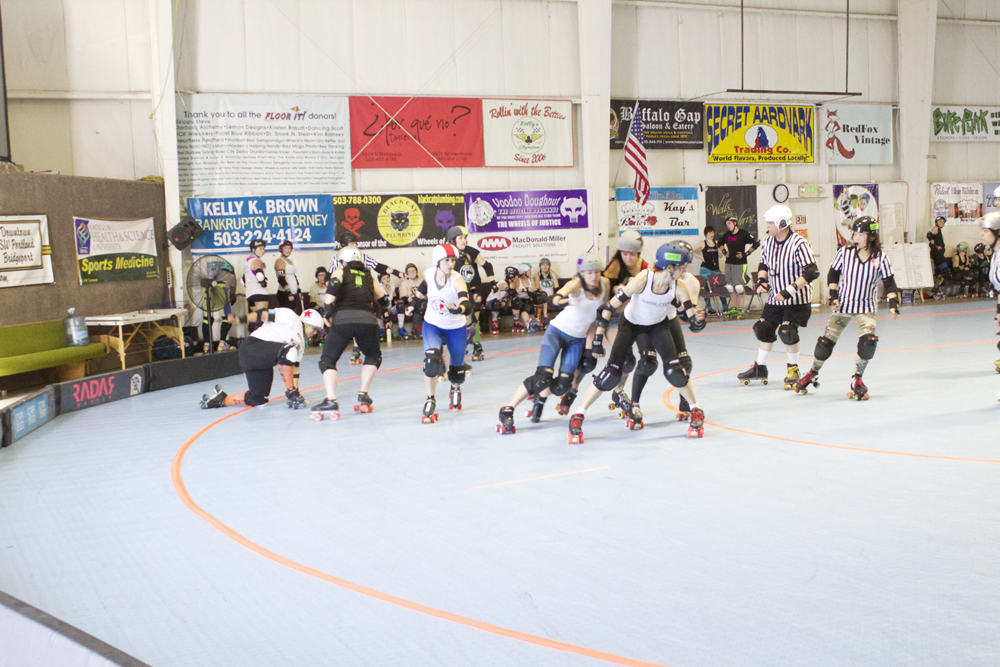Though I suspect in our embarrassingly religion-illiterate culture that few have a clue what the Via Dolorosa even is, its use in depicting a Palestinian Via Dolorosa in a gathering at PSU on Thursday, May 28, sponsored by SUPER, is disturbing.
Palestinian Via Dolorosa
Though I suspect in our embarrassingly religion-illiterate culture that few have a clue what the Via Dolorosa even is, its use in depicting a Palestinian Via Dolorosa in a gathering at PSU on Thursday, May 28, sponsored by SUPER, is disturbing.
Alluding to Jesus’ traditional cross-bearing path towards crucifixion, the Palestinian Via Dolorosa is about suffering endured since the Israeli independence of 1948. But its use in this way repeats false myths about Israel, and worse, recycles anti-Semitic slander.
There’s really only one possible similarity of note tying Palestinian Via Dolorosa and that of Jesus: both have been seen as perpetrated at the hands of Jews.
Otherwise, why pick the Via Dolorosa as the symbol?
With any number of familiar symbols of suffering available, the one chosen here smacks of the anti-Semitic “Christ-killers” motif.
It is unlikely that this offensive meaning was unintentional, since Thursday’s event was co-sponsored by the Friends of Sabeel-North America.
In fact, this usage of the Via Dolorosa in question is the brainchild of Sabeel, self-described as “an ecumenical grassroots liberation theology movement among Palestinian Christians.”
While this might sound simply like a left-wing Christian movement, Sabeel’s founder, Naim Stifan Ateek, makes clear that their aim is to designate the Israeli state in unequivocally anti-Semitic terms.
He unabashedly makes the connections between Palestinians’ and Jesus’ suffering, his 2001 Easter message proclaimed, “Jesus is on the cross again with thousands of crucified Palestinians around him.”
Or, reframing Jews as idolaters, he wrote: “In the name of the god of security, the Palestinians are today humiliated, dehumanized and oppressed.”
But most vitriolic is still the Palestinian Via Dolorosa, with its requisite stations of the cross. Sabeel leads guests “to the stations of the cross that Palestinians have, such as demolished homes, destroyed villages, checkpoints. Every one of those is a station of the cross, a station of suffering.”
And that same Easter sermon says Israel has placed a boulder over the Palestinian tomb, shutting them in, like the stone rolled in front of Jesus’ tomb.
Moreover, usage of the Arabic term “Al Nakba” (“the catastrophe”) to refer to the creation of the State of Israel in 1948 bluntly seeks to make the creation of the Jewish state seem like the Holocaust—in Hebrew, “ha-shoah” (“the calamity”).
Such a morally offensive comparison falsifies real events, as Palestinian suffering came not from the Jewish state’s creation, but repeated failed attempts of the Arab states to destroy the Jewish one.
But SUPER, in advocating for the welfare of Palestinians, would be advised to drop connections with groups like Sabeel using anti-Semitic language as propaganda.
They might think they are helping the powerless, in their simple Marxist worldview. Rather, they are keeping the powerless there by demonizing Jews as Christ-killers and refusing to acknowledge the real cause of Palestinian suffering.
That is, groups like Sabeel portray each event in the history of Palestinian as being at the hands of Jews.
Yet two events commemorated on Ateek’s own stations of the cross in Jerusalem, the 1948 Israeli Independence and 1967’s Six-Day War, which indeed resulted in Palestinian (and Israeli) suffering, resulted from Arab violence.
Otherwise, you would have to argue that Ben-Gurion’s declaration of independence was itself a declaration of war on the five Arab states that immediately attacked Israel. Or, that Nasser’s amassing troops and tanks on Israel’s border (and calls for the eradication of Israel!) was just a military exercise.
In these cases, including the invasion of Gaza, the devastation on both sides is about Israel’s unwillingness to allow terror and violence on its people.
And it is about Palestinian leadership’s unwillingness to halt the missiles, kidnappings and suicide bombs—something Jesus and his disciples never had a thing to do with. Such a Via Dolorosa does not exist.



